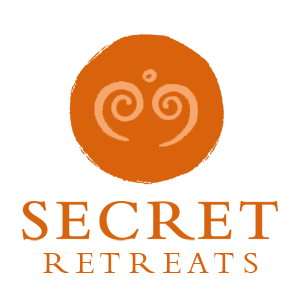We have considered the basic layout of the Hanok, next to examine is the shape of these structures. There are four basic shapes: square-shaped, L-shaped, U-shaped and straight-lined. The square-shaped design is unsurprisingly a four-sided house most often found in the north of South Korea where the harsh winters last longer. The fully enclosed design not only protected against the elements, but also gave the occupants more inner space to play with as all the rooms were connected. The wood-floored maru tended to be positioned in the center of the building. This meant it was directly connected to all the other rooms including the warmest room – the kitchen. The design of the L-shaped Hanok house in Korea consists of two straight-lined dwellings joined together at a right angle. The resultant smaller interior space compared to the square-shaped Hanok is offset by the benefit of a larger outside space. The maru tended to be positioned at the right-angled join of the two buildings and attached to the kitchen. The better ventilated L-shaped design was favored in the south of the country where the weather tends to be more clement. Next up is the U-shaped Hanok. The maru and kitchen would be positioned in the center of the building facing onto the open-ended courtyard with the bedrooms situated in the wings. The design was admired for its sense of symmetry and would often have a decorated tiled gabled roof that both keeps the wind and rain out and as a design it provides better ventilation. Finally, we have the simple straight-lined layout. The more compact interior space of this design has the payoff of allowing light to come in through windowed doors on all sides. It was also the design that offered the easiest options when choosing which cardinal direction the building needed to face, something that was terribly important in Hanok design.
Building a Hanok in Korea was not simply a case of choosing a nice flat bit of ground and erecting a building. A Hanok’s position, shape, and the design of the interior depended on how it would relate to its surroundings including the lay of the land, the seasons, and the region in which the Hanok village was located. This is the ancient principle of baesanimsu which generally means the mountain goes at the back of the Hanok and the river goes at the front.
The flexibility of the traditional Hanok design is one of the many reasons the architectural elements are still used by Koreans today. Indeed, the term Sinhanok, or ‘new Korean traditional house’ has been coined to describe Hanok-style houses and Hanok hotels created to cater to the modern lifestyle. Traditional elements such as the design of the wooden framework remain, but modern building techniques and materials are incorporated to create a more functional, comfortable, modern interior.
Staying at a Hanok is an experience that most of us probably didn’t realize was an option. However Secret Retreats holds the keys that unlock a trip back in time to a variety of wonderful, perfectly preserved South Korean houses and Hanok villages from a long-gone past.
Bukchon Hanok Traditional Village – Hanok in the Heart of Seoul
The Bukchon Hanok Traditional Village is a residential neighborhood in Jongno District, Seoul, South Korea where many Hanok have been restored. Once a residential quarter occupied by nobility and high-ranking government officials, visitors can relive the glories of the Joseon era of Korean history in a Bukchon Hanok Stay. Away from the frenetic pace of the modern city centre, the Bukchon Hanok Village Hotel welcomes visitors to step back to the serene past of this traditional South Korean village in Seoul. Stay at the Rakkojae Seoul Main Hanok with its black-tiled roof, clay walls, hardwood and natural jade floors, and century-old furniture mixed with modern comfort and western-style convenience replete with restful views of a pristine courtyard and lotus pond that could have come straight out of a Kurosawa movie (during his lesser-known South Korean period).
Andong Hahoe Hanok Village – Where Korean History Stands Still
Dubbed ‘the most Korean town in Korea’, Andong Hahoe Hanok Village is a UNESCO World Heritage Site famed for the preservation of its 15th century structures in a rapidly modernizing South Korea. From the aristocratic homes with their heavy sweeping tiled roofs in this delightful Hanok village, to the straw thatched servants’ houses (facing the Nakdong River to the front with the mountains at the back – baesanimsu). Visitors to the Rakkojae Andong Hahoe Folk Village are transported to the Joseon Period of Confucian scholars and Hwarang warriors. Visit the 600-year-old zelkova tree in the center of Andong Hanok Village in which a goddess called Samsin resides, take a Seonyujulbul Nori-a boat ride, and settle in to watch the Hahoe Byeolsingut Mask Dance.
Joseon Royal Residence – Experience Imperial Hanok Luxury in this Museum Hotel
Originally the residence of Lee Geun, the grandson of Emperor Gojong, the Yeomgeundang was the inspiration behind what is now known as the Joseon Royal Residence or Joseon Wangga. Painstakingly relocated tile-by-tile from Jongno-gu, Seoul to its current location in Yeoncheon Gyeonggi-do, visitors are invited to experience the architectural legacy of a royal dynasty as a once secret royal residence that now opens and shares its secrets to the public. Traditional Hanok charm in an ancient imperial setting.
Jogyundang Historic House – A Lovingly Restored Hanok Style Mansion
Formerly the Hanok residence of Kim Jong-il, the Jogyundang Historic House has been rescued from the ravages of Japanese colonialism and the Korean War to be restored to its former magnificence. The name of this ancient Hanok means ‘Shining House’, and guests will experience 200 years of history beneath 800-year-old wooden beams, walk across highly polished patina tiled raised floors, and enjoy ancient tea ceremonies while being regaled with stories of the house’s incredible history as told by the Hanok’s owner beneath a star-spangled roof.
Choosing to stay and travel South Korea with Secret Retreats will share with you and your family the rare opportunity to sleep in one of our distinctive Hanok Houses and to step back in time to an elegant bygone era. Experience the serenity, comfort, and venerability of ancient South Korea, a Secret Retreats Journey that takes you far away from the modern world for a couple of days, a week, or longer.
***
Contact the Secret Retreats Concierge to Book your next experience in South Korea on dream@secret-retreats.com for detailed and personal assistance.



